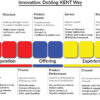
In the wake of recent studies by Knight Frank and Berkadia, India’s healthcare sector emerges as a dynamic field rife with challenges and opportunities. The studies underscore an urgent need for substantial investment in healthcare infrastructure to meet the demands of India’s burgeoning population. With a deficit of 2.4 million hospital beds and a requirement for an additional 2 billion sq ft of healthcare-related real estate, India’s healthcare landscape is at a crucial juncture. This scenario not only highlights the gaps in current healthcare provisions but also sheds light on the potential for growth in various sub-sectors, including medical education, research and development (R&D), medical technology, quality healthcare, the pharmaceutical industry and medical tourism.
Medical Education: Addressing the Bed-to-Population Ratio
The deficit in hospital beds is not just a question of space and infrastructure; it directly ties into the availability of qualified medical professionals. India’s current bed-to-population ratio of 1.3 per 1,000 is indicative of a broader issue within medical education. To fill these new hospital beds, India will require a proportionate increase in its healthcare workforce. This scenario presents an opportunity for the expansion of medical education institutions and programs. Increased investment in medical, nursing and other allied health science colleges, along with innovative teaching methodologies and technological integration, can help produce a new wave of healthcare professionals equipped to handle India’s unique healthcare challenges.
Research and Development: The Backbone of Innovation
The Knight Frank-Berkadia study also points towards the need for investment in medical R&D. India’s growing incidence of lifestyle diseases and its ambition to be a leader in affordable healthcare necessitate a strong focus on R&D. This includes the development of new drugs, medical devices, and treatment protocols. The pandemic has already shown the importance of rapid R&D in healthcare, and India’s position as a growing healthcare destination only amplifies this need. Collaborations between academic institutions, the private sector, and government bodies could be pivotal in advancing India’s R&D capabilities.
Medical Technology: The Catalyst for Modern Healthcare
The integration of advanced medical technology is paramount in modernizing India’s healthcare infrastructure. The demand for new hospital spaces and beds is an opportunity to incorporate cutting-edge medical technologies, from telemedicine and AI-based diagnostics to robotic surgery and digital health records. Such technologies can not only improve the quality of healthcare but also make it more accessible, especially in rural and underserved areas. The growth of India’s medical technology sector can also spur innovation and make India a global hub for medical technology development and manufacturing.
Medical device sector of India is contributing to only 9% of overall revenue. Besides, India imported medical devices worth ₹63,200 crore in 2021-22, up 41%, from ₹44,708 crore in 2020-21, as per data from the Union Ministry of Commerce and Industry. That is a huge drain on Indian exchequer. The Global Trade Research Initiative (GTRI) report projects India’s medical devices industry to grow from USD 12 billion to USD 50 billion by 2030. Key strategies include raising customs duty on non-WTO ITA-1 items, banning used equipment imports, and introducing a Performance Linked Incentive scheme. This approach aims to reduce import reliance, boost exports, and create over 1.5 million jobs. The COVID-19 pandemic showcased India’s capability in scaling up essential medical device production. Experts advocate for indigenous manufacturing of high-end equipment and emphasize the need for competitive pricing, quality improvement, and global market targeting to strengthen India’s position in the global medical devices sector.
Quality Healthcare: The Core Objective
While expanding the healthcare infrastructure, maintaining and improving the quality of healthcare is crucial. This involves not only the physical infrastructure but also the quality of medical care, patient safety protocols, and healthcare delivery models. Accreditation and standardization of healthcare services will play a vital role in ensuring that the expansion of healthcare facilities translates into better healthcare outcomes. As of now, there is no universal policy on accreditation and standardization of healthcare policies. The National Accreditation Board for Hospitals and Healthcare Providers (NABH), established in 2005 under the Quality Council of India, a part of the commerce ministry, operates accreditation programs for healthcare organizations in India. In the 17 years since its inception, only about 2 percent of Indian hospitals with more than 50 beds have achieved full accreditation. To date, the NABH has accredited approximately 835 hospitals that each have over 50 beds and nearly 800 hospitals with a capacity of under 50 beds.This pursuit of quality healthcare also opens avenues for training and development programs for healthcare professionals, emphasizing the importance of quality in every aspect of healthcare.
Pharmaceutical Industry: Poised for Exponential Growth
India’s pharmaceutical industry, known “Pharmacy of the world,” is a key player in the global arena and valued at around USD 42 billion in 2021, is on the cusp of an unprecedented growth trajectory. The domestic market, contributing USD 20.03 billion, is propelled by enhanced healthcare accessibility and a rising tide of chronic diseases. Indian pharma exports have reached USD 24.44 billion, predominantly in generics, underscoring the nation’s pivotal role in the global drug supply chain. Despite its stature, the sector still depends on imports for critical components like Active Pharmaceutical Ingredients (APIs), costing around USD 2.5 to 3 billion.
This industry is primed for exponential expansion, driven by the burgeoning demand for healthcare services and India’s established expertise in generic drug manufacturing and vaccine production. The focus on research and development (R&D) and the escalating prevalence of chronic illnesses are catalysing the development of innovative pharmaceutical products. As India continues to emerge as a cost-effective hub for medical procedures, the growth of its pharmaceutical sector becomes increasingly vital to support this burgeoning ecosystem. Projections indicate a potential surge in the sector’s value to USD 65 billion by 2024, with the possibility of reaching USD 120-130 billion by 2030. This growth is expected to be fuelled by the global demand for generic medications and bolstered by strategic government initiatives, positioning India at the forefront of the pharmaceutical world.
Medical Tourism in India: Current Landscape, and Future Prospects
ndia’s medical tourism industry, currently valued at around USD 3 billion, is projected to grow to USD 9-10 billion by 2025. The country’s appeal in this sector stems from cost-effective treatments, high-quality care, skilled professionals, and advanced technologies. Key strategies to enhance this growth include strengthening healthcare infrastructure, especially in smaller cities, enhancing international collaborations, streamlining visa processes, and promoting holistic wellness, including traditional medicines. Furthermore, standardizing quality and pricing, effective marketing, and providing language and cultural sensitivity training to staff are essential. These efforts aim to solidify India’s position as a global leader in medical tourism.
A Multifaceted Approach for a Healthier Future
The expansion of India’s healthcare infrastructure is a multidimensional challenge that requires a concerted effort from various stakeholders, including the government, private sector, and civil society. It is an opportunity to not only bridge the existing gaps but also to position India as a global leader in healthcare. The growth of medical education, R&D, medical technology, quality healthcare, and the pharmaceutical sector are not isolated phenomena; they are interconnected facets of a comprehensive healthcare ecosystem.
In summary, the findings from the Knight Frank-Berkadia report should be seen as a call to action for policymakers, investors, and healthcare professionals. By embracing these challenges and harnessing the potential for growth, India can transform its healthcare landscape, ensuring better health outcomes for its population and establishing a robust, world-class healthcare system.
Prahlada N. B
26 November 2023
Chitradurga

















Very informative and insightful sir.
ReplyPrahlada Sir 💐
‘Indian healthcare system’ is multifaceted, with medical services being provided by Govt run as well as private facilities, & catering to 1•39 billion people.
The Govt of India has earnestly launched following initiatives , to uplift health care delivery :
* National health mission
* Ayushman Bharath &
Pradhan Mantri Jan Arogya
Yojana (AB-PMJAY)
* National Medical
Commission ( NMC )
* PM National Dialysis
Program
* Janani Shishu Suraksha
Karyakram
* Rashtriya Bal Swasthya
Karyakram
It is said that for a welfare state, primary health structure, becomes a necessary precondition for sustainable development.
With this in mind , what next ? !
* Health Infrastructure should be improved , especially in rural & hilly regions, taking guidance of Knight Frank – Berkadia .
* More funds to be allocated for healthcare services ( currently 2.1% of GDP ) & also for Medical research.
* The number of Medical Professionals , Paramedics & health workers , should be increased by starting new medical & other related schools.
* Financial incentives should be offered to health care professionals & other health workers , to work in remote areas.
* There should be improvement in mental health services, by increasing fund allocation & also giving proper training to healthcare workers regarding mental health issues.
* The govt health care
system , should work in coordination with other sectors such as education, housing & sanitation to address social determinants of health & reduce overall health inequalities.
* There should be some arrangement between govt & private hospitals, say a case which can’t be handled in govt facilities…should be referrable to a tertiary private hospital , with cost of the patient to be borne by Govt.
This is already seen in some Tertiary Private hospitals( Govt hospital patients being referred to them ); same to be increased now by govt , for the benefit of poor & needy.
* Govt Doctors , also should receive training now & then about recent advances in medical & surgical care.
* The pharmaceutical industry in India is valued at $ 50 billion. Over 200+ countries are served by Indian Pharma exports.
Recently four drugs needed by rare disease patients were manufactured for first time in India , which cost much less than western imports. Four more such drugs are in the pipeline.
* There is a need for time bound implementation of above mentioned Govt programmes, & also there should be a monitoring body to look after these programmes, enforcing regulations & conducting regular audit of these programmes.
* Covid times , has taught us the importance of having a finely knit health care network , use of telemedicine & other emergency care devices, drugs & personnel.
Overall , Indian healthcare system , is a sphere where rapid progress is being made & much more to be done .
Reply